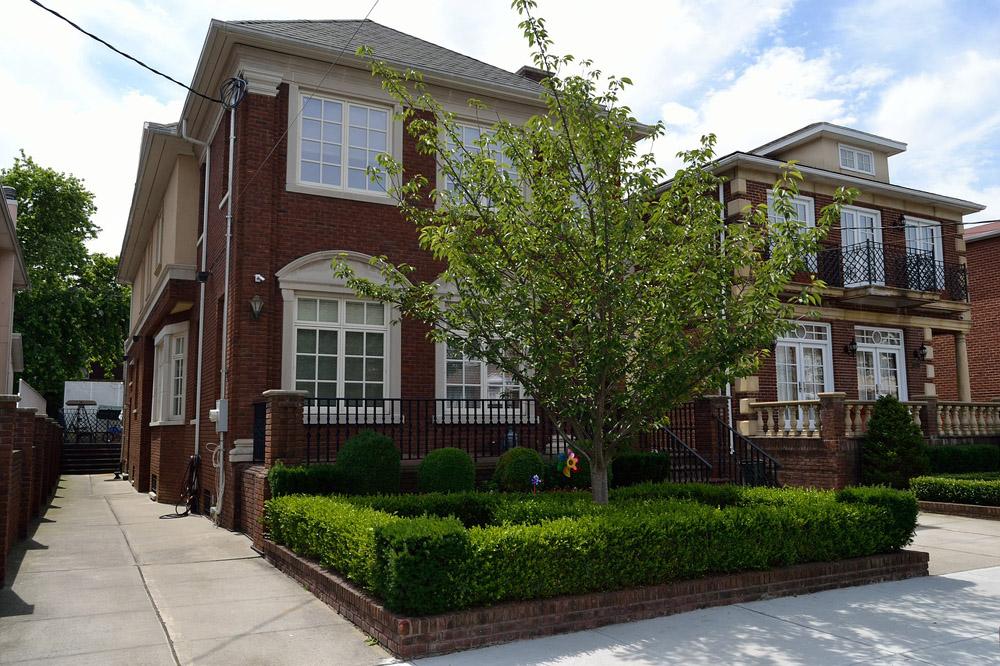
A few years back, Fannie Mae and its brother lender Freddie Mac launched loan programs called HomeReady and Home Possible, respectively. Their purpose? To compete with the 3.5% down FHA loan program and help low- to moderate-income borrowers buy a home without much cash.
Which is great news for anyone looking to buy real estate with almost no money down.
Why? Because the constraint for most real estate investors is cold, hard cash.
But investors who don’t mind living in the property for a year can take advantage of 3-5% down loan programs from Fannie, Freddie, and the FHA.
Key Takeaways:
-
- Investors can buy single-family homes with 3% down and two-to-four-unit homes with 5% down, but must live in the property for at least one year.
- After one year, they can move out and keep the property as a non-owner-occupied rental property.
- You can use the future rents from other units to help you qualify for the mortgage.
Fannie Mae Now Allows 5% Down on Multifamily
It costs hundreds of thousands of dollars to buy an “average” investment property. Even when investors use an investment property loan to cover 80-90% of the purchase price, that still might mean coming up with $50,000. For a single investment property.
But what about homeowner loans, that finance 95%, 97%, even 100% of the purchase price? Can real estate investors ever use homeowner loans to invest in rental properties?
In late 2023, Fannie Mae revamped its rules to finance up to 95% LTV for multifamily properties with up to four units. The change applies to standard purchases, no-cash-out refinances, HomeReady, and HomeStyle Renovation loans.
That means buyers can put down just 5% on duplexes, triplexes, and fourplexes, with purchase prices up to $1,396,800. To meet the homeownership requirement, you must live in one of the units for at least one year. After that, you can move out and keep the property as an income property.
In short, Fannie and Freddie’s programs are ideal for multifamily house hacking.
Overview of Fannie Mae’s HomeReady Loan Program
HomeReady is designed to help lower-income homebuyers with minimal cash to buy a home.
It doesn’t have to be their first home, and it doesn’t have to be a purchase loan – refinances are allowed.
The minimum credit score for a HomeReady mortgage loan is 620. Which is generously low, but not as low as FHA’s minimum credit scores (580 for a 3.5% down payment, 500 for a 10% down payment).
Only owner-occupied properties are eligible, but we’ll talk more about that in a moment.
Here’s where it gets a bit sticky for real estate investors. To qualify for a HomeReady property loan, Fannie Mae and Freddie Mac do impose income limitations in some areas.
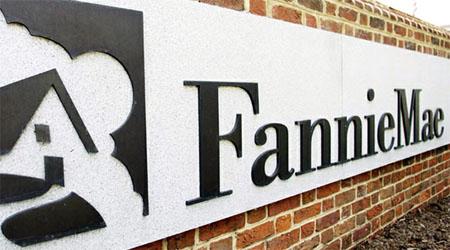 In many neighborhoods and land tracts, there are no borrower income ceilings. In others, they’re based on the local area median income (AMI). You can check specific neighborhoods’ income ceilings for HomeReady loans here.
In many neighborhoods and land tracts, there are no borrower income ceilings. In others, they’re based on the local area median income (AMI). You can check specific neighborhoods’ income ceilings for HomeReady loans here.
It’s a bit strange: “You must have enough income to pay us back, but not more than the local average income!” Many homebuyers and house hackers find it a delicate line to walk.
If you’re a landlord already, you can use your rental income to help you qualify for a HomeReady loan.
As a final perk, parents and other non-occupants can co-sign on HomeReady loans to help borrowers qualify.
Previously, Fannie Mae required minimum down payments of 15-25% for multifamily properties, but that changed as of November 2023.
Freddie Mac’s Home Possible Loan Program
Freddie Mac launched a similar loan program called Home Possible. The program has two options for financing properties: one with a 5% down payment and another with a 3% down payment.
For the 3% down option, a difference from Fannie’s HomeReady program is that the minimum credit score is a bit higher at 640. But the 5% down option allows borrowers with no credit history – a huge boon for many people who have not yet established their credit.
Like Fannie Mae’s programs, the 5%-down Home Possible loan program allows 2-4-unit properties.
Wondering why you might consider Freddie Mac’s Home Possible program over FHA’s 3.5%-down loans?
Because of two other nice perks of both Freddie Mac’s Home Possible and Fannie Mae’s HomeReady loan programs. First, they don’t require lifelong mortgage insurance, unlike FHA’s new lending rules. Once the loan balance drops below 80% of the property value, borrowers can ask their lender to remove the mortgage insurance.
The other advantage to the Home Possible loan program is that it allows flexibility on where the down payment comes from. Freddie Mac allows family members to contribute, employer contributions, and more. That definitely helps when you want to buy a property with no money down (at least none of your own money)!
How to Use Fannie Mae & Freddie Mac Loans for Rental Properties
The HomeReady and Home Possible loans don’t allow for non-owner-occupied investment properties. So how can real estate investors take advantage of these outstanding low-down-payment loan programs?
Easy: you live in the property for at least a year. You could live there by yourself as a typical homeowner, then move out after a year and keep the property as a rental. But if you do that, you don’t get to live for free by house hacking.
House Hacking: Low-Down Payment Financing to Live for Free
I love house hacking. In many ways, it’s the perfect way to buy your first rental property with no money down (or at least minimal money down).
Here’s how the traditional house hacking model works: You buy a small multifamily property (2-4 units), move into one of the units, and rent out the other(s).
There are several huge advantages to house hacking. First, you get to use homeowner financing, which is significantly cheaper (lower interest rates, lower closing costs) than rental property financing. Even more importantly, homeowner financing requires a far lower down payment.
Like, for example, a 3% down payment!
Another advantage to house hacking? Your neighboring tenants’ rent payments cover your mortgage. If you do it well, their rental income also covers expenses like repairs, vacancies, property management costs, etc.
In other words, you get to live for free. Hence the name house hacking! (Want more juicy details? Here’s a detailed house hacking case study of how one 20-something with no real estate investing experience lives for free in a duplex.)
One final advantage of house hacking is that it’s easier to manage rental units when you live at the property yourself. Think of it as property management training wheels.
Get creative and look for ways to buy your first rental property with no money down (or at least very little).
House Hacking a Single-Family Home
Don’t like the idea of buying a multifamily property? Don’t sweat it – you can still house hack.
One option is to create an income suite: a separate section of the property that you can rent out, either long-term or short-term as an Airbnb landlord.
Is your property not very “segment-able”? You could rent out rooms to housemates. Or rent out rooms on Airbnb.
Or, for that matter, you could build or add an accessory dwelling unit (ADU).
Another option? Deni Supplee (the co-founder of SparkRental) found a unique way to house hack her suburban single-family home. As empty nesters, she and her husband Jerry had plenty of space and no one to fill it. They brought in a foreign exchange student, who has not only breathed new life into their home, but the exchange student placement service pays them a hefty monthly stipend. (If you want more information about the service she used, message us using the Chat button at the bottom right and we’ll connect you with them!)
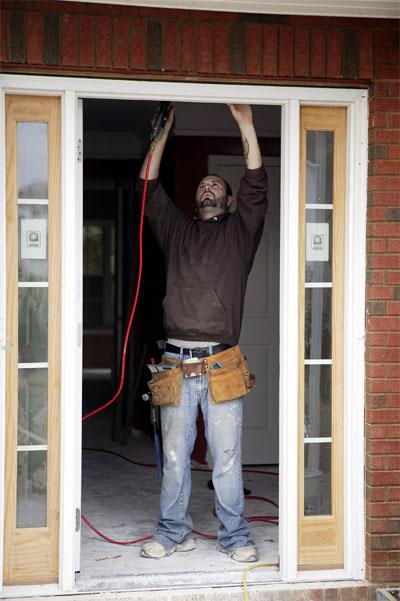 The Live-In Flip
The Live-In Flip
House hacking is a fantastic way to finance and buy your first investment property. But it’s not the only way.
Investing in rental properties isn’t always easy to afford with a standard investment property loan. So, when some real estate investors first start out, with little cash for a down payment, how do they finance their first few properties?
By living in them for a time.
One approach is to move into a property that needs cosmetic updating, spend the next year updating it while you live there, then selling it for a profit and doing it all over again. Or stay for two years, to take advantage of the 121 exclusion (homeowner exclusion) and avoid paying capital gains taxes.
But who says you have to sell it? What if you kept it as a rental property?
The problem with rental property loans is that they typically require at least 20% down. And when you’re first starting out buying investment properties, a 20% down payment can seem unreachable.
But a 3% down payment, through a program like HomeReady or Home Possible? That’s a lot more doable.
As a final thought, bear in mind that Fannie Mae’s HomeStyle Renovation loans allow multifamily properties with up to four units, with a 5% down payment. You can renovate a multifamily while house hacking to combine several strategies.
Comparing Fannie & Freddie Loan Terms to Landlord Loans
Wondering how house hacking loans through Fannie Mae and Freddie Mac stack up against typical landlord loans?
Here’s a quick breakdown. Keep in mind that for owner-occupied loans through Fannie and Freddie, you have to actually move in for at least a year!
| Conventional Mortgage Lenders | Forman Loan Services | Kiavi (formerly LendingHome) | Visio | RCN Capital | New Silver | LendingOne | Lendency | Conventus | |
|---|---|---|---|---|---|---|---|---|---|
| Where to Check Rates | Try Credible | Instant Rate Quote | Kiavi Rates | Visio Rates | RCN Capital Rates | New Silver Rates | LendingOne Rates | Lendency Rates | Conventus |
| Loan to Value (LTV) | 80-97% owner-occ, 75-80% rentals | Up to 80% | Up to 80% | Up to 80% | Up to 80% | Up to 80% | Up to 80% | Up to 80% | Up to 80% |
| Credit Score | 580+ | 660+ | 660+ (no hard credit pull) | 680+ | 660+ | 680+ (no hard credit pull) | 680+ | 660+ | 620+ |
| Debt-to-Income Ratio (DTI) | 28% - 36% | No income docs required | No income docs required | No income docs required | No income docs required | No income docs required | No income docs required | No income docs required | No income docs required |
| Cash Reserve Requirements | 6-12 mos.' payments | 9 mos.' payments | None | 6 mos.' payments | 9 mos.' payments | 6 mos.' payments | 6 mos.' payments | 6-12 mos.' payments | 3-6 mos.' payments |
| Min. Interest Rate | 6.50-8.625%+ owner-occ, 7.49-9.49%+ rentals | 6.90%+ | 7.9%+ | 7.97%+ | 7.99%+ | 7.95%+ | 6.25%+ | 6.375%+ | 7.375%+ |
| Repayment Term | 15 or 30 Years | 5/1 ARM, 7/1 ARM, or 30-year fixed. Non-recourse loans available. | 3/1 ARM, 5/1 ARM, 7/1 ARM, 30-year fixed, or interest-only | 5/1 ARM, 7/1 ARM, or 30-year fixed | 3/1 ARM, 5/1 ARM, 7/1 ARM, 30-year fixed, or 5- or 10-year interest-only | 30-year fixed | 5/1 ARM, 7/1 ARM, or 30-year fixed | 5/1 ARM, 7/1 ARM, 10/1 ARM, or 30-year fixed | 30-year fixed |
| Time to Funding | 30-60 Days | 14-21 Days | 10-30 Days | 21-30 Days | 14-21 Days | 5 Business Days | 10-30 Days | 20-30 Days | 30-45 Days |
| Loan Limits | $50,000 - $726,200 (higher in some markets) | $55,000+ (no limit) | $75,000 - $2M | $75,000 - $2M | $55,000 - $2M | $100,000 - $2M | $75,000 - $2M | $55,000 - $2M | $150,000 - $9 million |
| Prepayment Penalties | Varies by lender; as high as 5% within 1 year | 0-5 years available | 3% first year, 2% second year, 1% third year, none after 3 years | 3, 5, or 7-year options, including a 3-year step-down pre-payment penalty option | 0-5 year prepayment options | 3 or 5 year options | 80% of 6 months' interest within first 3 years | 2, 3 or 5 year options | 3 Year Stepdown (3-2-1%) |
| States Serviced | Credible is licensed in all except: HI, MO, NV | All Except: AZ, CA, MN, NV, ND, SD | All Except: MS, NM, RI, UT, VT | All Except: AK, DE, ID, MN, ND, NE, NV, OR, RI, SD, UT, VT | All Except: AK, HI, NV, ND, SD & VT | All Except: AK, AZ, CA, CO, DC, ID, MN, NV, ND, OR, SD, UT & VT | All Except: AK, NV, ND, SD & UT | All Except: AK, AZ, CA, ID, MN, NC, ND, NV, OR, RI, SD, TN, UT, VA,VT | All except: AZ, DC, MN, MT, ND, NV, SD, VT & UT |
| Report to Credit Bureaus? | Yes | No | No | No | No | No | No | No | No |
| Where to Apply | Try Credible | Forman Loans | Kiavi (no hard credit pull) | Visio Lending | RCN Capital | New Silver | LendingOne | Lendency | Conventus |
Conventional Investment Property Loans vs. Homeowner Loans
After extolling the virtues of house hacking, live-in flips, and other techniques for buying investment properties with homeowner financing, what are some of the other options available for investment property loans?
The first and most obvious option is conventional investment property financing. You simply call up your regular mortgage broker and ask them about their investment property loan programs.
Conventional investment property loans have their pros and cons. The biggest advantage? They tend to be priced reasonably.
Disadvantages include a slow, tedious underwriting process, stiff income requirements, and they report on your credit report.
“Brian why is that a problem? I’m not a deadbeat, I’m going to pay the mortgage on time!”
Here’s the thing about conventional investment property lenders, and homeowner lenders, for that matter: they’ll stop lending to you if you have more than a few mortgages on your credit report.
That means you have a ceiling of around three or four mortgages before you’re no longer eligible for conventional investment property financing. This is why people can only pull the old “Borrow an FHA or HomeReady mortgage, move in for a year, then move out and keep it as a rental” trick a few times before it stops working.
Other Options for Rental Property Loans
Luckily, nowadays there are excellent online investment property loans available, crowdfunding loans for investment properties, and more hard money lenders than ever before.
Check out our comparison chart of rental property loans and fix-and-flip loans, to view pricing and lending terms side-by-side.
We’ve found that online-only lenders do a particularly good job with rental property loans. Landlords can borrow a 30-year fixed mortgage, at rates equivalent to (or only slightly higher) than conventional investment property loans.
Real estate investors who specialize in flipping have even more good options. Check out the investment property loan comparison chart for a breakdown of several options.
Are HomeReady & Home Possible Loans Feasible as Investment Property Loans?
Yes, with some caveats.
First, investors must be prepared to move into the property for at least a year. If you’re looking for a straight investment property, you’ll need to look elsewhere (see our investment property loan comparison chart).
Second, buyers’ income must be in the “Goldilocks zone” – high enough to qualify for the loan, but below the local median.
Third, the loans will appear on borrowers’ credit reports. That means you will only be able to borrow a few times from government-backed or conventional lenders before hitting their mortgage loan ceiling.
Read: these Fannie and Freddie loans are not scalable in the long-term for real estate investors.
With all that said, HomeReady and Home Possible loans have some strong perks. One excellent advantage over FHA loans is that they don’t require mortgage insurance for the life of the loan: when the loan balance drops below 80% of the property value, borrowers can apply to have mortgage insurance removed.
Another perk? The low down payment required, between 3-5%. And Home Possible has particularly flexible requirements on where the down payment comes from.
Any investors considering an FHA loan for house hacking or a live-in flip should talk to their loan officer about HomeReady and Home Possible loans to compare the terms. Qualifying borrowers may find lower interest rates, lower down payments, or other advantageous loan terms compared to conventional and FHA loans.
Happy real estate investing!
Ever used a government-backed loan (e.g. FHA) for house hacking or a live-in flip? How did it go? Share your experiences below!
More on Getting Started Buying Rental Properties:
*Credible Disclosure: Prequalified rates are based on the information you provide and a soft credit inquiry. Receiving prequalified rates does not guarantee that the Lender will extend you an offer of credit. You are not yet approved for a loan or a specific rate. All credit decisions, including loan approval, if any, are determined by Lenders, in their sole discretion. Rates and terms are subject to change without notice. Rates from Lenders may differ from prequalified rates due to factors which may include, but are not limited to: (i) changes in your personal credit circumstances; (ii) additional information in your hard credit pull and/or additional information you provide (or are unable to provide) to the Lender during the underwriting process; and/or (iii) changes in APRs (e.g., an increase in the rate index between the time of prequalification and the time of application or loan closing. (Or, if the loan option is a variable rate loan, then the interest rate index used to set the APR is subject to increases or decreases at any time). Lenders reserve the right to change or withdraw the prequalified rates at any time.
Credible Operations, Inc. NMLS# 1681276, “Credible.” Not available in all states. www.nmlsconsumeraccess.org.
About the Author



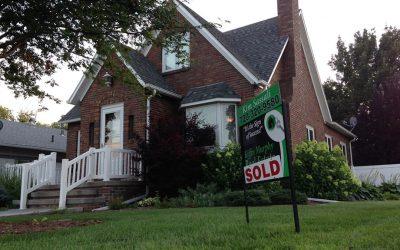





















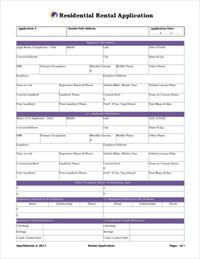


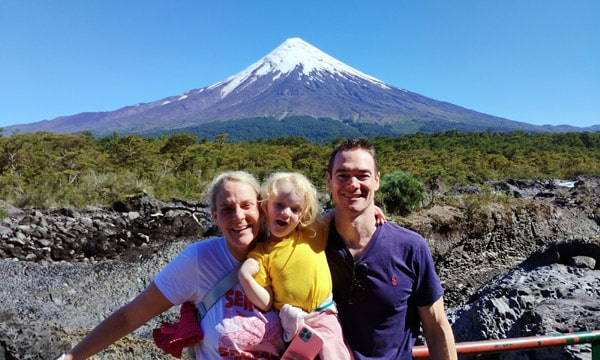
Interesting. I’ve thought about using FHA loans for house hacking, but I’ve always been put off by the mortgage insurance premium. The Freddie Mac program could be a good alternative.
If you try out the Freddie Mac Home Possible program as a real estate investor, let me know how it works out for you!
These are great options for new investors, to come up with less cash in exchange for the inconvenience of moving in for a year.
Thanks for sharing these details, not always easy to find these sorts of details geared towards investors.
I completely agree Hank – often when you’re first starting out, cash is a huge constraint, so trading some inconvenience for a lower down payment on investment property financing is a trade worth making!
Are there any investor loans programs from Fannie or Fraddie for purchasing a 2nd rental with 3% to 5% down payment
These programs require owner occupancy, but you house hack with them, moving into one unit in a 2-4 unit property, and renting out the other(s). If you’re looking to buy a straight-up rental, that you won’t live in any units, you’ll need an investment property loan (we’ve vetted a few lenders, see this page: https://sparkrental.com/investment-property-loans/).
My neighbor would like to sell me her house. Good price, I want it. I won’t be ready to move in till about a year but she’s ready to sell now. Can I buy it and rent it out for a year with the homeready?
Hi Monique, unfortunately you have to move in after buying, if you use an owner-occupied loan. But you may be able to work something out with the seller, to put down a deposit to and sign a purchase contract a year in advance.
This sound great but I was looking for a loan that does not require owner occupancy.
I am a real estate agent and I am truly looking to flip and not acquire rental properties.
Are you aware of an investor program that is 3-5% down payment that does not require you to have rental property? Or live in for a year?
Hi Linda, no there are no loan programs that offer down payments that small for rental properties. But you can get creative to cover the down payment, such as using a seller-held second, or drawing money from credit cards, or raising money from friends and family, etc. While conventional lenders often don’t let you borrow any part of the down payment, portfolio lenders usually do – see our “Lenders” page on the menu bar for examples.
I have a client who owns 2 homes and wants to buy a 3rd.
home 1 va loan primary res
home 2 income property
wants to buy home 3, another income property but only has 10k. How much home can he buy in arizona using these new special programs
Hi Dean, these programs require owner occupancy for the first year. Your client would have to move into the new home.
Their best bet is to either house hack (see this article: https://sparkrental.com/house-hacking-10-ways-live-for-free/) or borrow from a portfolio loan (see our Lenders page). With portfolio loans, the rules on where down payments come from are looser, so they can get more creative with where they’re sourced. Check out this piece for ideas: https://sparkrental.com/15-clever-ways-down-payment-for-rental-property/.
Hi Brian – I currently live in an owner occupied duplex that I purchase 14 months ago with an FHA mortgage. Would I be eligible for the 5% down Home Possible Loan Program on a multifamily property, assuming I move into one of the units?
I believe so Zach, but you’d have to discuss it with a loan officer who handles Freddie Mac Home Possible mortgages. One thing to be careful about is the cap on mortgages reporting on your credit – they usually top out at 3 or 4. House hacking is a great way to get started on building your rental property portfolio, but you can’t keep doing it forever.
Thanks for this article. I currently own a home that still pay the mortgage on and we are looking to get a 2nd home for rental purposes. If I buy the 2nd home using your method, for 5% down (the most I can afford without borrowing from somewhere else) what does “moving in” require? Can I set up an air mattress and sleep there a few times a week while keeping my furniture in the primary house?
Or just “moving in” simply mean getting my mail there?
Hi Stephen, when you take out the mortgage you sign a document declaring that you will live in the property for at least a year. While the lender won’t be sending in a surveillance team to double check that you live there permanently, you’d be committing fraud if you take out a primary residence loan but don’t actually move in for at least a year.
Hello Zach, I am currently looking for purchase a rental home in the county where I currently reside. If I purchase a duplex or even a triplex, do I still need to sell my current home or can I rent that property out?
Hey Omar, you can keep your current home with your existing mortgage. You can only do that a few times though, as conventional lenders stop lending to you once you have four or so mortgages reporting on your credit.
Regarding the move in require for house hacking… How long do you have to move in to one of the units? I am looking at a triplex that is fully rented right now. Before I could move in, I will have to get one if the renters out first. Is there a time frame to get moved in?
If I understand your question correctly, you’re asking how quickly you have to move in after purchasing (rather than the minimum occupancy requirement, which is one year). Lenders want to see you move in imminently after buying, and if all three units are presently occupied they’ll ask you about it. You’ll have to explain your plan to the lender, and it’s up to the underwriter whether they’ll accept your move-in plan.
Can I house hack a 2nd home? Have one in Arizona and found great buy in Wisconsin.
You can, but if you buy it as a second home, you won’t qualify for owner-occupied financing like these Fannie Mae and Freddie Mac programs. You’d have to get a second home loan, which is usually more expensive and requires a higher down payment.
My husband and own 10 rental units. 3 duplexes and 2 single family homes. We live in none of them all income properties. I wanted to refi one duplex and due to the banks 80% rule cannot get enough cash out. We want to pay off one house and refi one duplex with the cash.
Down payments are supposed to work as the owner’s ‘skin in the game’. Low down payments with little to no proof of income, low credit scores, adjustible rate mortgages, all of this is a recipe for something to go wrong. When the ARM resets borrowers will become confused people wondering WTF who begin looking for someone to blame. These programs are in place to assist people in getting into a home that ‘they own’ yet if not done correctly they’ll never own it free and clear. Interest rates of 5-7% and high are going to be rough to deal with and so people will turn to the lower adjustible rates, not even knowing what it really is. When their game goes bust they’ll wonder what happened and the think they got screwed by someone. In general, saving money to be used for a down payment and constantly building one’s credit score are a part of what it takes to make it. ‘Hacking’ is a cool term yet it seems that many people are lacking the knowledge it’ll take to make it all come together in way that’ll be sustainable and in the end people pay. Oftentimes the ones who construct their lives to make sense economically pay the bill for the ones who have not.
Hi, I have a unique stipulation. I want to buy a duplex or two SFH, one to live in one to rent or STR. I want to house hack. I have identified two markets I believe have good ROI potential with priced points that make the cash I have meaningful.
But, although I have excellent credit 800+ and 100.000 cash, I have low income and income from non standard sources. I think I would need to list potential income from renting as income to be approved for a loan. Having low income is a problem for most banks I’ve been turned down even by institutions I’ve had long successful relationships with. Suggestion?.
Hi Carolyn, you’re allowed to use income from the other units, or your other rental properties, to help you qualify. Your non-standard income sources might also help you qualify, as long as you can show proof they exist.
Keep us posted on what happens!
Hello,
Where can I apply for the Fannie Freddie 3% down on investment property?
Hi Esmerelda, you either need to move into one unit and house hack, or you move in and then keep the property as a rental when you move out. You need to live in the property for at least a year, when you get a Fannie or Freddie mortgage, but you can buy a multi-unit and rent out the other units.
Hi, can I use one of these loans to build a house on land that I own? I want to build a house to live in and rent out the basement to either a full-time renter or as a Airbnb.
Hi Rennell, no, unfortunately you can’t use Fannie Mae or Freddie Mac loans for construction. Check out our investment property Loans page for more financing options, and best of luck!
Hi, I love your site!!
So my wife and I want to purchase our first home as we are tired of throwing money into rent that is basically dead money!! We have been renting for three years and have an excellent rent payment history. We have a strong 6 figure W-2, tier 1 credit, zero debt, but NO down payment :o(
We don’t mind picking up a 2 family and house hacking for 2-3 years in a developing, up-and-coming part of Brooklyn (as we live in NYC), but a 2 family there starts at $800K+. Both our jobs are here in NYC.
Are we eligible for the Freddie and Fannie 3.5% Home Ready or Home Possible programs?
If so, how do we apply? What would you do in our situation?
We do not want to rent and definitely are looking to purchase a house!
Thanks Sun! From what you’ve told me, you should be eligible for the Fannie Mae Home Ready and Freddie Mac Home Possible programs. Any reputable local conventional lender should be able to help you, but you can also get quotes from LendingTree and Credible.
Keep us posted!
My wife and I did a conventional 3% down live in flip. We made 50k and now are looking to get into small multi family investing! The savings in down payment helped us pay for improvements and sell at profit! This post is helpful for my REI goals, thanks!
So glad to hear you’re seeing success with your real estate investments Jake, keep it up!
I own land of which I would like to add a home to. Is there a type of loan that I can apply for that would finance a new build that will be a rental property (I will not be able to live in it since the land is located in a different state then what I am currently in).
Hi Daveta, yes, you can get a construction loan for a rental property. We have a few construction lenders listed on our Loans page – check ’em out!
What if I wanted to buy a beach house, which could be owner occupied some of the time and some of the time it would be rented (like peak beach weeks in the summer June/July/August). Would one of these loans work for that?
Hi Crystal, no, you’d need a different loan program for a vacation home. Check Loan Depot for rates on vacation home mortgages.
I am interested in buying four single family homes in same neighborhood. Would live in one and then rent the other three. Can I use the multifamily programs? Under what terms?
Hi Jim, no you can only use owner-occupied financing for a multifamily property if it’s several units in the same building/property. It would need to be a four-unit property, not four separate single-family properties.